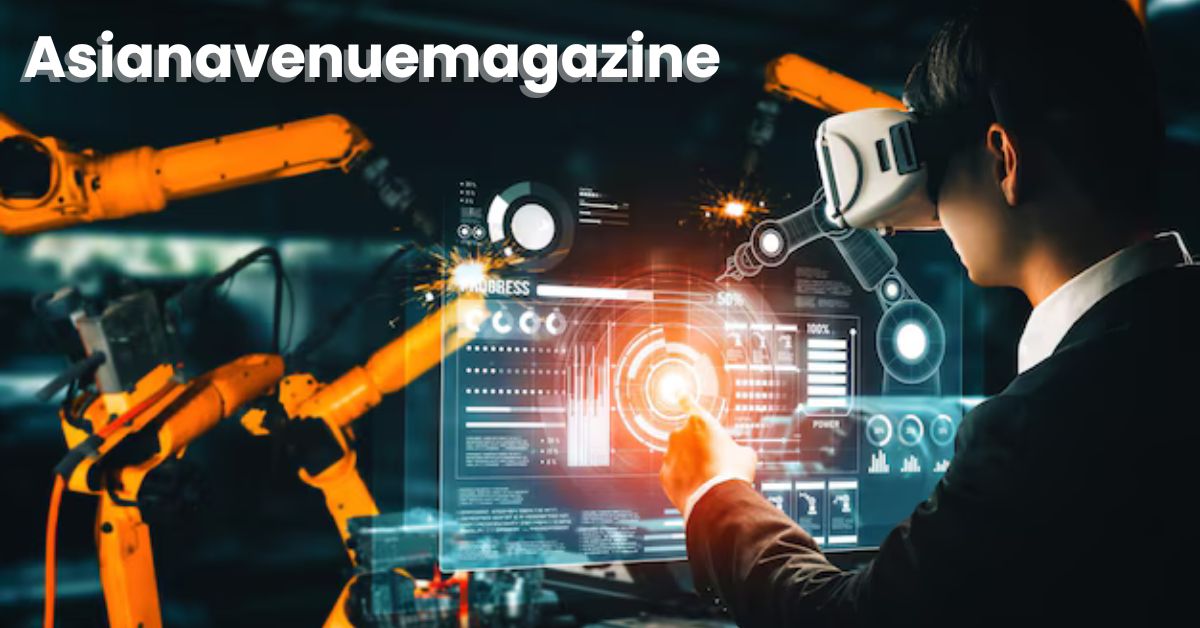JKUHRL-5.4.2.5.1J Model: Epic, Bold, Revolutionary Engineering Innovation
Introduction to the JKUHRL-5.4.2.5.1J Model
Among the many models in today’s fast-paced technological landscape, the JKUHRL-5.4.2.5.1J Model stands out as having the ability to completely transform engineering systems. Envision a system that can revolutionize the way several sectors operate by learning and adapting as they go. As we delve into this groundbreaking paradigm, you’ll learn how it has developed from previous iterations of intelligent engineering systems and why it’s the center of attention for forthcoming innovations.
Across several industries, the JKUHRL-5.4.2.5.1J Model is set to make waves—are you prepared to plunge into its possibilities? It promises to enhance efficiency and drive sustainable practices, among other things.
Evolution of Intelligent Engineering Systems
The development of AI in engineering has been really astounding. The voyage demonstrates the progression of technology, from basic automated procedures to modern, complex models.
Early engineers made do with rudimentary equipment and calculated everything by hand. The capacity for analysis and design was profoundly altered by the advent of computers. A watershed moment in this progression occurred with the incorporation of AI.
The use of machine learning algorithms started to improve the quality of decisions. Thanks to these developments, predictive analytics and simulations have become much more accurate. Consequently, data-driven tactics began to be adopted by other businesses.
Intelligent engineering systems nowadays are capable of learning and adapting on their own. With little to no human input, they optimize performance in real-time. This change encourages creativity and productivity in many different fields.
There is a lot of room for growth in the future, and with each new version come better, more individualized answers to difficult problems.
Stay updated with all our recent articles — visit Asianavenuemagazine today.
Key Features and Components of the JKUHRL-5.4.2.5.1J Model
Built with extensive functionality in mind, the JKUHRL-5.4.2.5.1J Model offers a sturdy architecture. Machine learning algorithms are its backbone, allowing for analysis and decision-making in real-time.
It can be easily modified to meet the demands of different industries because to its modular architecture, which doesn’t interfere with current processes. The model enhances responsiveness by dynamic interaction with its surroundings, made possible by built-in sensors and actuators.
Connectivity to the cloud is another notable feature that allows for easy remote monitoring and control. This makes sure that important data is always accessible to consumers.
Engineers and operators may harness insights more effectively using user-friendly interfaces that facilitate navigation through complicated data sets. Stricter security measures protect private data without compromising the reliability of the system.
All of these parts complement one another to provide a smart engineering framework that can change with the times.
Advantages and Applications of the JKUHRL-5.4.2.5.1J Model
The JKUHRL-5.4.2.5.1J Model has game-changing benefits in a number of fields. Through real-time analysis of massive datasets, its adaptive algorithms improve decision-making procedures.
Increased automation and efficiency greatly reduce operational costs in industries like manufacturing. Improved patient outcomes as a result of prompt treatments are possible thanks to this model’s contribution to predictive analytics in healthcare.
Better use of resources and more sustainable practices are both made possible by incorporating this smart engineering technology into city design. Its ability to gather accurate data makes environmental monitoring a breeze.
Using the concept, schools may create individualized lessons that meet the requirements of each student and keep their interest high.
These uses demonstrate the adaptability and revolutionary potential of the JKUHRL-5.4.2.5.1J Model, which has the ability to propel innovation and radically alter whole sectors.
Potential Impact on Industries and Society
A number of sectors, like manufacturing, healthcare, and transportation, are about to undergo radical transformations thanks to the JKUHRL-5.4.2.5.1J model. The optimization of processes by its intelligent engineering systems may boost efficiency and cut down on operating expenses.
Using this concept to automate processes in manufacturing improves output quality while decreasing waste.
The healthcare industry is also poised to reap substantial benefits from sophisticated predictive analytics, which may improve patient care by allowing for the development of more tailored treatment regimens in response to data collected in real-time.
By using this technology, transportation networks will gain intelligence. Congestion and unsafe driving conditions might be greatly ameliorated with the help of traffic control technologies.
New positions centered on these intelligent systems may open up more employment prospects in tech-driven industries on a societal level. Considering how easily these innovations may become a part of everyday life, the possibility of an enhanced quality of life becomes apparent.
Challenges and Limitations of the JKUHRL-
Although the JKUHRL-5.4.2.5.1J Model shows promise, it does have certain issues. The difficulty of integrating this approach with preexisting systems is a major obstacle. A lot of sectors are still using antiquated tech, which makes transitioning to new systems a pain.
Privacy and data security issues also pose a constraint. The importance of safeguarding data from intrusions grows as intelligent engineering systems collect more and more data.
Also, teams who aren’t conversant with sophisticated technical ideas or AI principles have a high learning curve. At first, this may impede efficiency and slow down implementation.
The expense of creating and maintaining such complex systems is another factor that may prevent smaller businesses from taking advantage of them to their full potential. Due to these budgetary constraints, innovation may be limited to bigger corporations alone.
Another potential barrier to the widespread adoption of the JKUHRL-5.4.2.5.1J Model by businesses is the existence of relevant regulations.
Conclusion
The JKUHRL-5.4.2.5.1J Model is state-of-the-art since it combines engineering with intelligence in a smooth manner.
It might revolutionize several other areas, including manufacturing and healthcare, and spur innovation in them all. In order to fully capitalize on this thrilling environment, it is essential that we comprehend its potential as we move through it.
The level of success in integrating this paradigm into current systems will depend on the level of engagement with stakeholders. Groundbreaking solutions to real-world problems will emerge as a result of collaboration between data scientists and engineers.
Adopting these smart technologies will improve society in many ways, including efficiency, sustainability, and quality of life.
Stay updated with all our recent articles — visit Asianavenuemagazine today.
FAQs
What is the JKUHRL-5.4.2.5.1J Model?
For intelligent engineering applications, the JKUHRL-5.4.2.5.1J Model provides a sophisticated framework that prioritizes flexibility and efficiency.
How does it enhance engineering processes?
Workflows are made easier with this model’s integration of automation, real-time data processing, and analytics driving by AI.
Which industries can benefit from its implementation?
The JKUHRL-5.4.2.5.1J Model has the potential to greatly improve productivity and innovation in sectors including healthcare, transportation, and manufacturing.
Are there any notable limitations associated with it?
Despite its potential, there are a few obstacles to overcome, such as the high expense of installation and the necessity of continuous training to get the most of it.
How will it shape future technological advancements?
We expect fresh innovations in smart technologies that could transform the way companies function in different industries function as more and more organizations embrace the JKUHRL-5.4.C 25.J Model’s principles.



